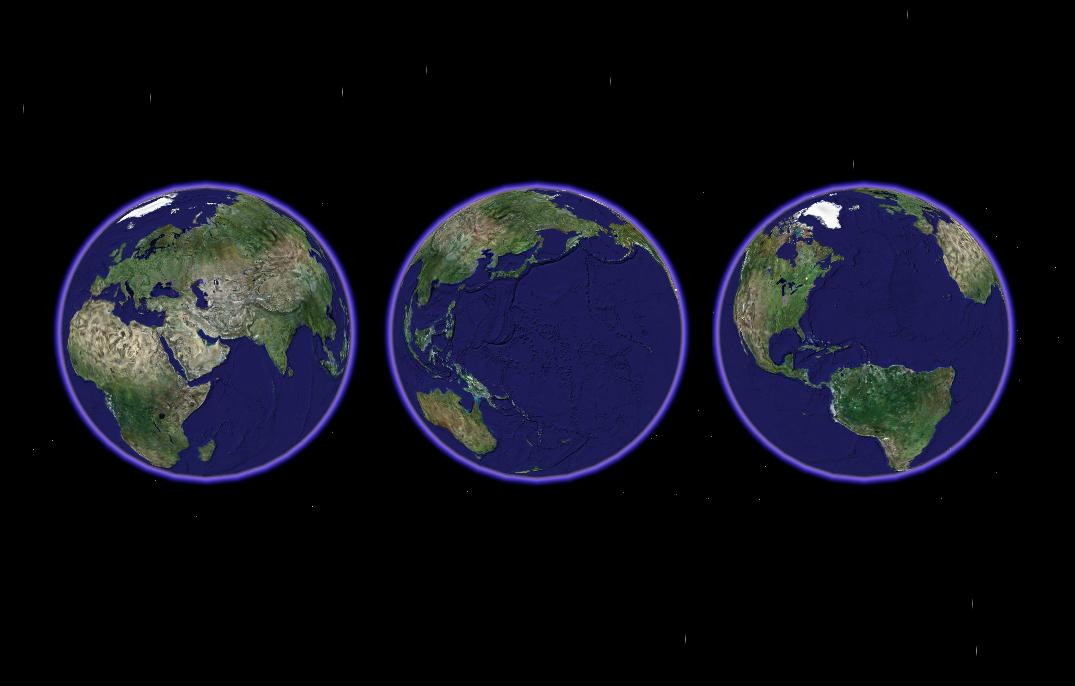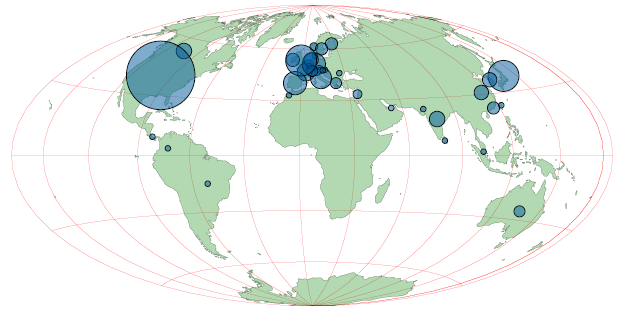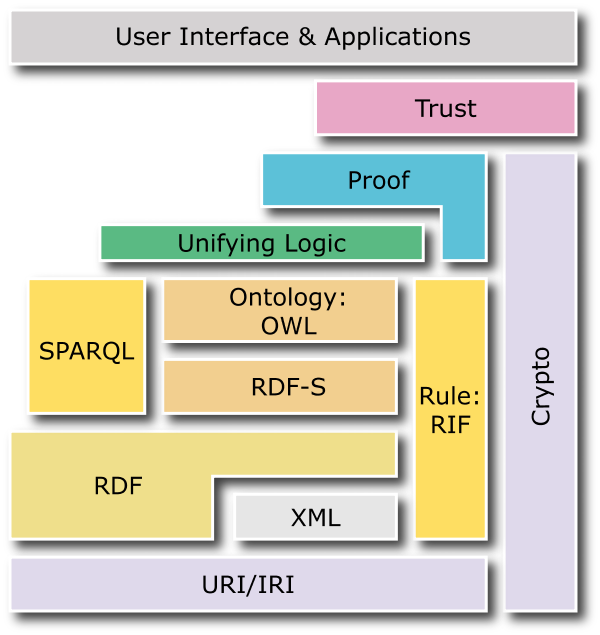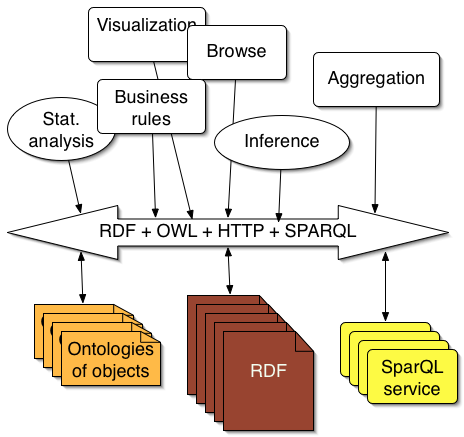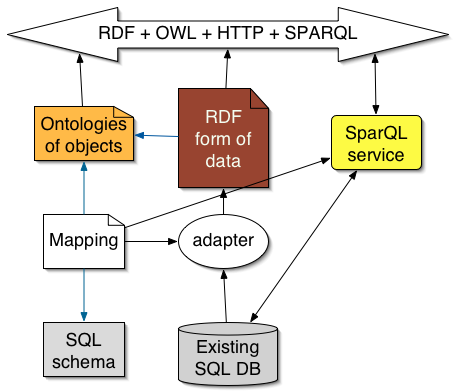Outline

- Evolution of the Web and the Role of Standards
- Emerging W3C Technologies
- Introduction to the Semantic Web
- Discussion
Evolution of the Web
and the
Role of Standards
What Led to the Web's Success?

- Simple architecture - HTML, URI, HTTP
- Networked - value grows with data, services, users
- Extensible - from Web of documents to ...
- Tolerant - even w/ imperfect mark-up, data, links, software
- Universal - independent of systems and people
- Free / cheap - browsers, information, services
- Simple / powerful / fun for users - text, graphics, links
- Open standards ...
Why are Open Standards Important?
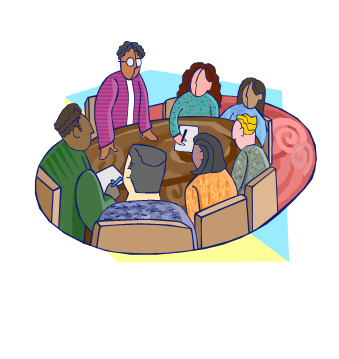
- Broad industry agreement (if done right)
- Interoperability ... cross-application, -organization, -data
- Avoids vendor lock-in ... for providers and users
- Open access = no black boxes
- Mandated ... by customers, government
- Open, royalty-free standards = good business
sense
Founded by Tim Berners-Lee in 1994, W3C is:
- Providing the Vision to Lead
- Engineering the Open Standards that
Make the Web Work ...
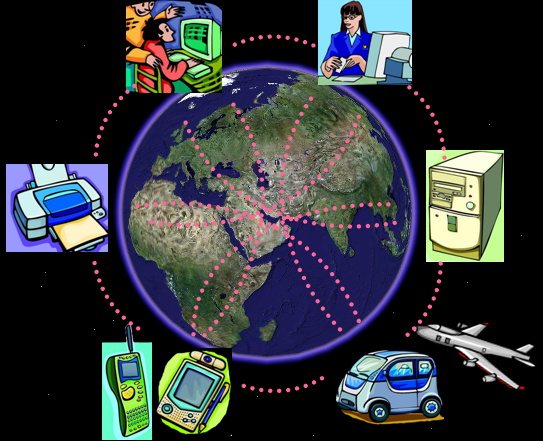
... expanding ...
- From a Web of Documents ...
- Toward One Web ...
- ... of Creators and Consumers
- ... of Data and Services
- ... on Everything
- ... for Everyone
- -- think Web 3.0

Engineering an Interoperable Foundation of the Web
- More than 100 Web Standards to date
- Including: HTML, XML, CSS, SOAP, SVG, Voice XML, RDF
and more
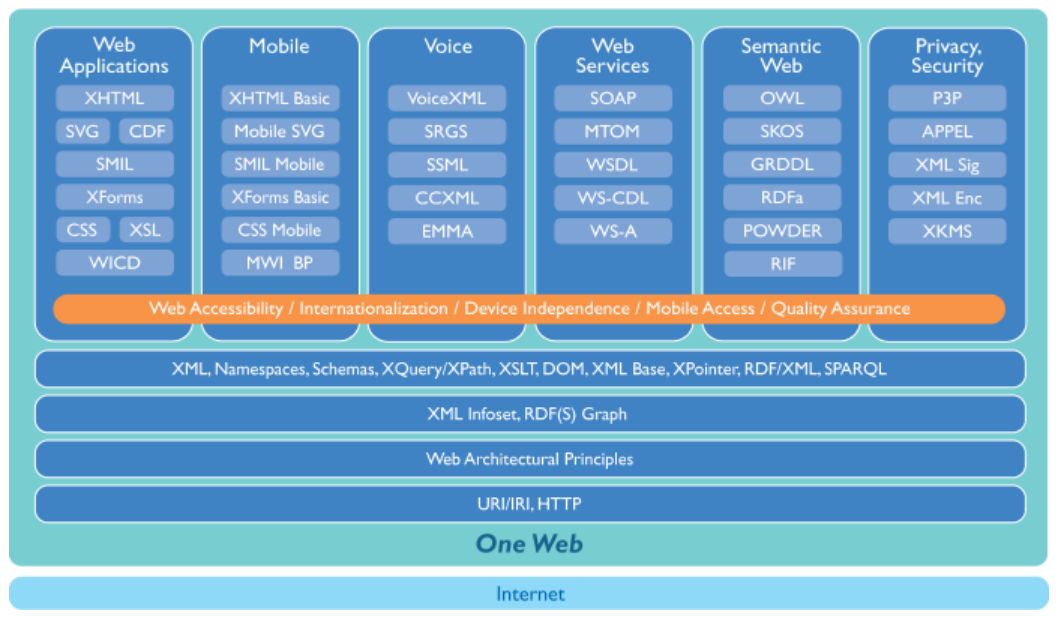
The Real Question
- Q: Which of these might be relevant to your future?
- A: All of them…

- But let's look at W3C's emerging technologies, and focus on
one
Emerging W3C Technologies
Web for Everyone

Universal Access ...
Web on Everything

*The* User Interface, everywhere ...
Web of Data & Services
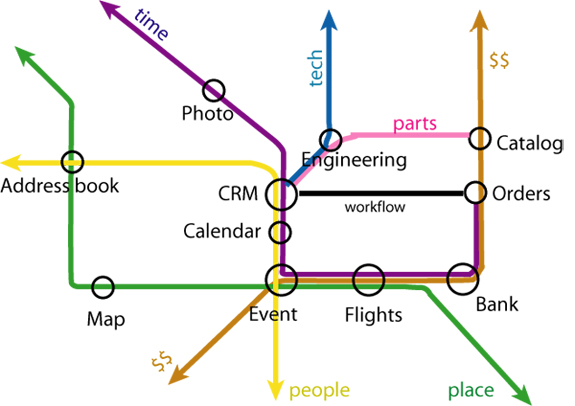
Interoperable information and programs ...
- XML: Binary, Processing Model
- Web of
Services: Performance, Addressing, SemWeb Services, Policy (overview
slides)
- Web of Data = Semantic Web: Deployment, Query, Rules, Health Care/Life Sciences, Content Labeling, Geospatial, Multimedia Semantics
Introduction to the
Semantic Web
What is the Semantic Web?
"The Semantic Web is an
... extension of the current web in which
... information is given well-defined meaning,
... better enabling computers and people to work in
cooperation."
___
The
Semantic Web
Tim Berners-Lee, James Hendler and Ora Lassila
Scientific American, May 2001
Semantic Web: Why?
- Tasks often require combining data across the Internet, e.g.:
- Integrating data across the enterprise
- Hotel, transport, meeting, personal info come from different
sites
- Mining data from biochemical, genetic, pharmaceutical, patient
databases
- Cross-referencing disparate digital libraries
- Humans understand how to combine this information ...
- Not always easy (different vocabularies, languages, formats)
- Machines aren't smart enough :-)
Why Can't Machines "Understand"?
Analogy:
What We Say to Dogs
- "Stay
out of the garbage! Understand, Ginger? Stay out of the garbage!"
What Dogs Understand
- "... blah blah blah blah GINGER blah blah blah blah ..."
What Machines "Understand"
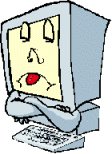 |
" ... blah blah
<a
href=http://www.xwz.com/foo.html>.text-link.</a> blah blah . . . ."* |
- Computers must "understand" more:
- Not human concept of "understanding"
- Just useful machine processing, for example, capturing the nature of
- the "link-text" object
- the thing at the other end of the link
("http://www.xwz.com/foo.html")
- the relationship between the two (why are they linked?)
--
* where <a
href=...> is HTML for a "link"
Toward Processable Search Semantics
Google PageRank:
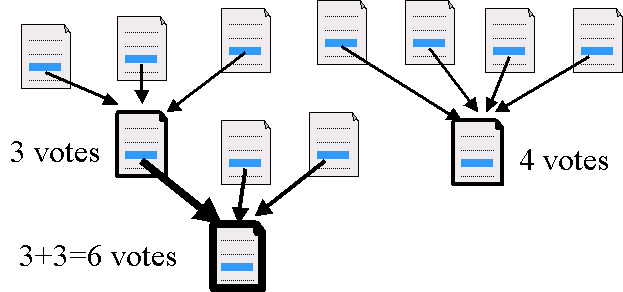
- Web links are machine processable
- Minimal semantics assumed: "This" refers to "that" = popularity
- Amazing results from minimal semantics
What if Web pages had more semantics?
(See Article by
Bijan Parsia)
Ways to Enable Machine Processing
Smarter Machines
- Teach computers to infer the meaning of Web data
- Natural language, image recognition, etc.
- ... this is the Artificial Intelligence approach
Smarter Data
- Make data easier for machines to find, access and process
- Express data and meaning in standard machine-readable format
- Support decentralized definition and management, across the
network
- ... this is the Semantic Web approach
Uniform Resource Identifiers (URI)
- URIs have two, very
powerful, functions:
- Unique, unambiguous name for something
- Where to find that something
- URIs can be used to identify definitions for concepts
- Especially useful for ontologies & metadata
Resource Description Framework (RDF)
- Semantic Web's Resource Description Framework: a W3C standard (Primer)
- Statements linking data so as to describe things (concepts, objects,
etc.)
- RDF : Data :: HTML link :
Documents
- Descriptive statements expressed as triples:
- (Subject, Predicate, Object) or (Subject, Property,
Value)

- Most useful, Web-wise, when these are URIs, e.g. for this presentation:
RDF: Flexible Representation
Linking table and tree data ...
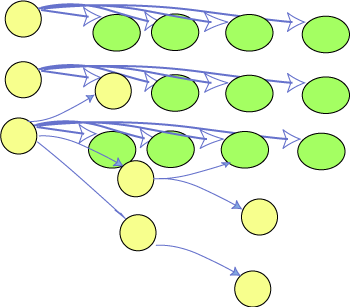
Web Ontology Language (OWL) +
- W3C standard (Guide, Overview)
- Defining concepts & relationships within area of knowledge
- Like DBMS data dictionary or schema, but ..
- Global, standard syntax based on RDF
- Can define more complex, graph relationships
- Using URIs as keys
- On the Web
- Includes standard vocabulary for describing properties and classes.:
- Datatypes (e.g., integer, date, string ..)
- Relations (e.g. subclass of, property of ..)
- Cardinality (e.g. exactly one ..)
- Characteristics of properties (e.g. symmetry)
- ... and more
Standards En Route
- Logic, proof, trust, etc. in the future ...
Most of the Current Web
- Minimal machine-processable information -- dumb links
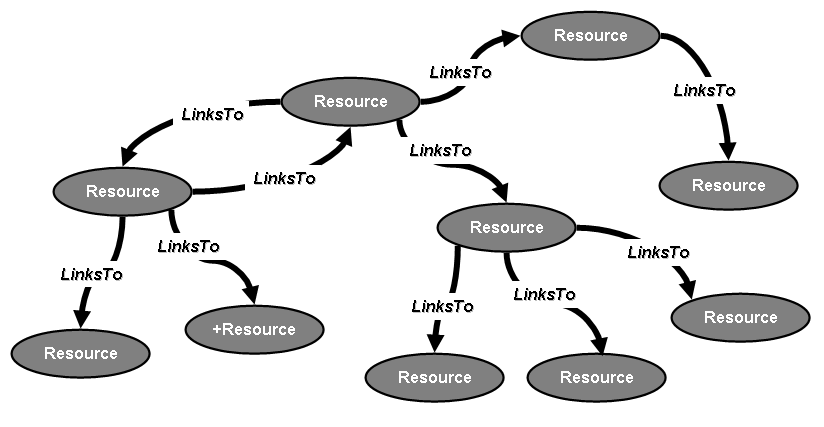
Semantic Web: "Smarter" Resources and Links
- More machine-processable information: data connected by relationships
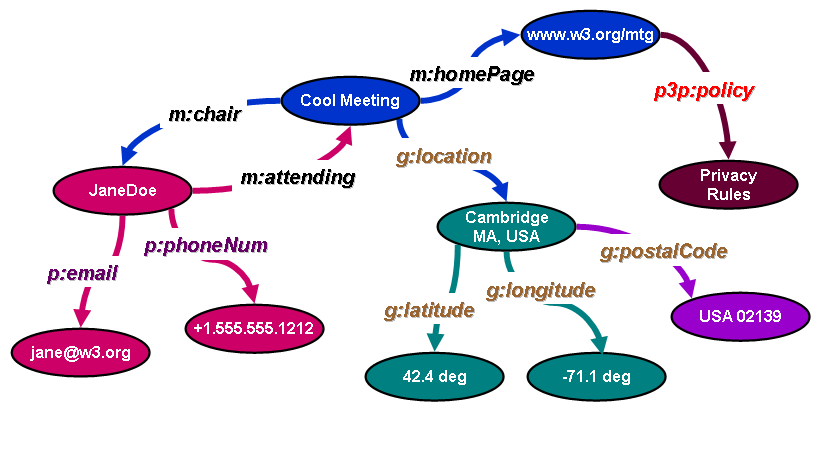
___
[ellipses = resources; color = one data
source; x: = one ontology]
(see also more detailed example related to book
searching and selling)
Enterprise Integration Today
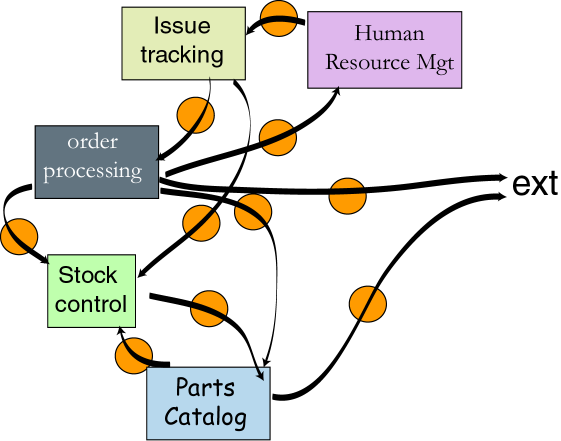
Enterprise Integration on the "RDF Bus"
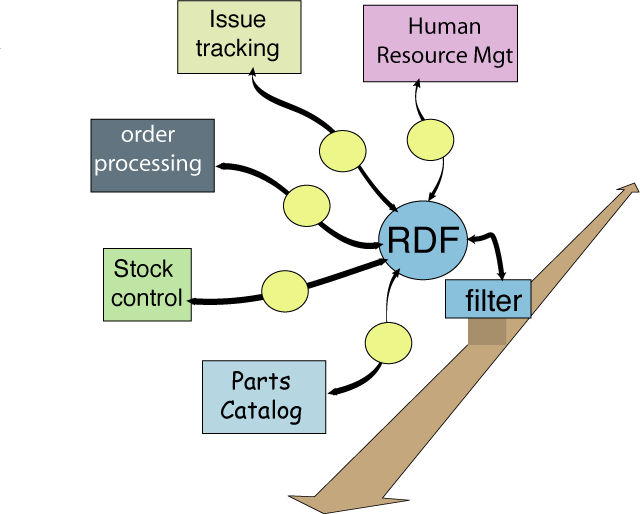
Structured Data is Everywhere
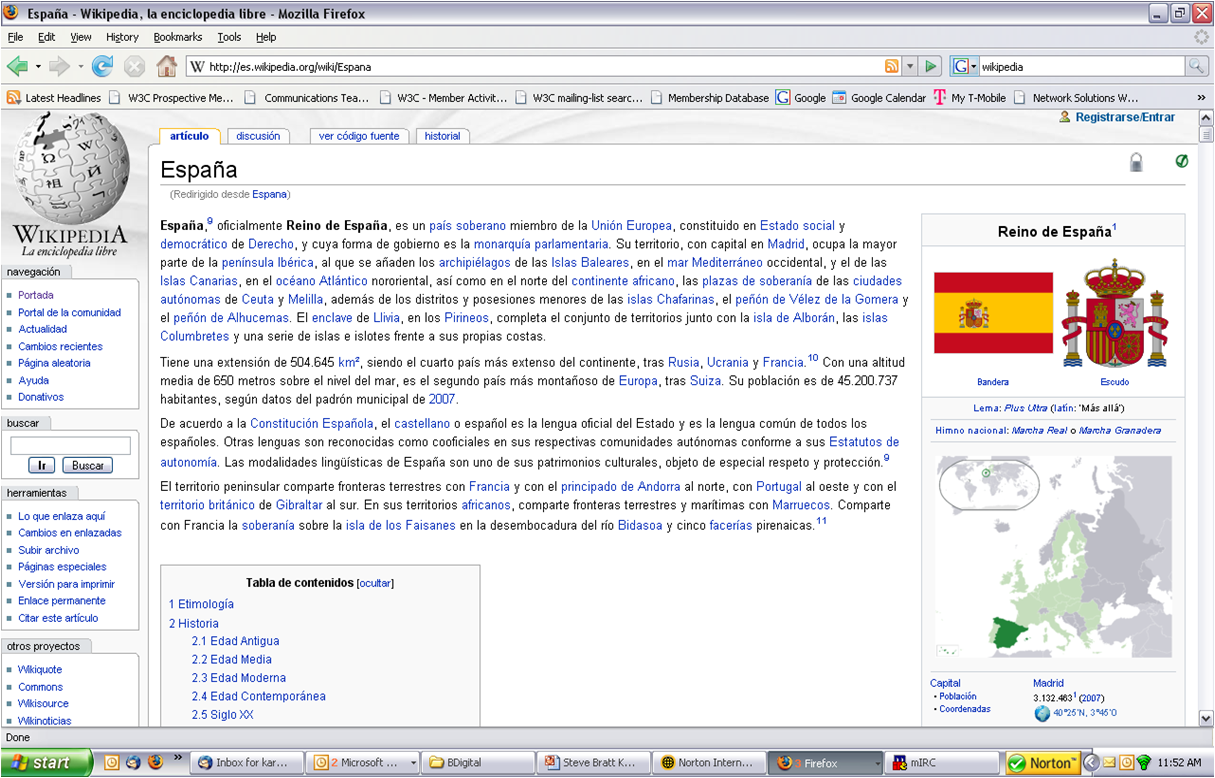
Linked Open Data Project
23 billion triples
100 million links between datasets
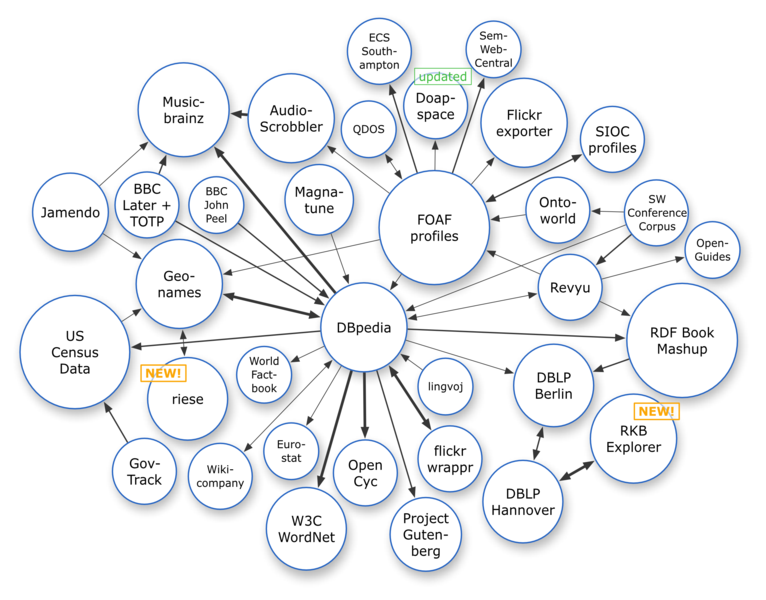
Life Science Onotologies Linked via Semantic Web
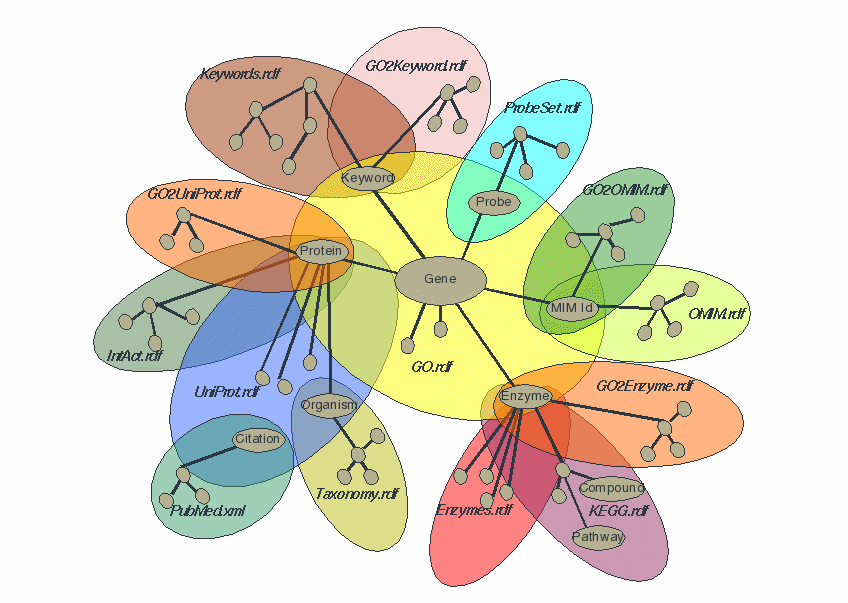
Challenges Ahead
Classic "chicken and egg problem" en route to "network
effect"
- Providing information in Semantic-Web-friendly ways
- Exposing existing data stores as RDF
- Automated and human-assisted tools to create RDF stores, ontologies,
mappings
- Making data accessible to people and programs
- Usable interfaces to masses of semantic data
- Search, filtering, aggregation, processing, graphics
- Access via multiple modes, multiple devices
- Addressing broader operational and social needs
- Universality, quality, provenance, versioning, safety, privacy,
access control, authorization, trust
Getting Familiar with the Semantic Web
- See
more detailed tutorial*
- Research groups (e.g., MIT/DIG, RPI/Tetherless World, etc.)
- Commercial initiatives (HP,
IBM, Oracle,
Nokia, etc.)
- Conferences (e.g., ISWC, SemTech, etc.)
- Follow W3C's work to drive incubation and standardization
- Development tools
Summary
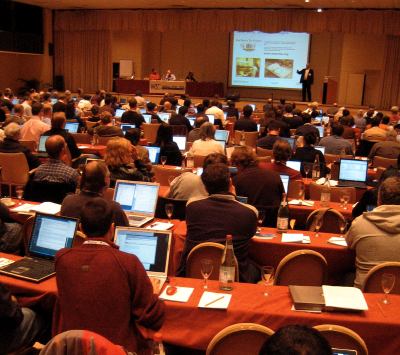
- Evolution toward one Web ...
- of Creators and Consumers
- of Data and Services
- on Everything,
- for Everyone
- Semantic Web
- Next, logical, evolutionary step
- Revoutionoary step?
- Play with is, and decide for yourself!

http://www.w3.org/




















